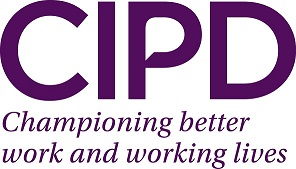
Lumber is wood that has been processed into uniform and useful sizes, including beams and planks or boards. Lumber is mainly used for construction framing, as well as finishing. Lumber has many uses beyond home building. Lumber is referred to as timber in the United Kingdom, Europe, Australia, and New Zealand, while in other parts of the world the term timber refers specifically to unprocessed wood fiber, such as cut logs or standing trees that have yet to be cut.

Plywood is a composite material manufactured from thin layers, or "plies", of wood veneer that have been stacked and glued together. It is an engineered wood from the family of manufactured boards, which include plywood, medium-density fibreboard (MDF), oriented strand board (OSB), and particle board.

Vernon Parish is a parish located in the U.S. state of Louisiana. As of the 2020 census, the population was 48,750. The parish seat is Leesville. Bordered on the west by the Sabine River, the parish was founded in 1871 during the Reconstruction era.

West Memphis is the largest city in Crittenden County, Arkansas, United States. The population was 26,245 at the 2010 census, ranking it as the state's 18th largest city, behind Bella Vista. It is part of the Memphis metropolitan area, and is located directly across the Mississippi River from Memphis, Tennessee.
The Occupational Safety and Health Administration is a regulatory agency of the United States Department of Labor that originally had federal visitorial powers to inspect and examine workplaces. The United States Congress established the agency under the Occupational Safety and Health Act, which President Richard M. Nixon signed into law on December 29, 1970. OSHA's mission is to "assure safe and healthy working conditions for working men and women by setting and enforcing standards and by providing training, outreach, education, and assistance." The agency is also charged with enforcing a variety of whistleblower statutes and regulations. OSHA's workplace safety inspections have been shown to reduce injury rates and injury costs without adverse effects on employment, sales, credit ratings, or firm survival.

The Occupational Safety and Health Act of 1970 is a US labor law governing the federal law of occupational health and safety in the private sector and federal government in the United States. It was enacted by Congress in 1970 and was signed by President Richard Nixon on December 29, 1970. Its main goal is to ensure that employers provide employees with an environment free from recognized hazards, such as exposure to toxic chemicals, excessive noise levels, mechanical dangers, heat or cold stress, or unsanitary conditions. The Act created the Occupational Safety and Health Administration (OSHA) and the National Institute for Occupational Safety and Health (NIOSH).

The Allegheny National Forest is a National Forest in Northwestern Pennsylvania, about 100 miles northeast of Pittsburgh. The forest covers 513,175 acres of land. Within the forest is Kinzua Dam, which impounds the Allegheny River to form Allegheny Reservoir. The administrative headquarters for the Allegheny National Forest is in Warren. The Allegheny National Forest has two ranger stations, one in Marienville, Forest County, and the other in Bradford, McKean County.

The United States Postal Inspection Service (USPIS), or the Postal Inspectors, is the federal law enforcement arm of the United States Postal Service. It supports and protects the U.S. Postal Service, its employees, infrastructure, and customers by enforcing the laws that defend the United States' mail system from illegal or dangerous use. Its jurisdiction covers any crimes that may adversely affect or fraudulently use the U.S. Mail, the postal system, or postal employees. With roots going back to the late 18th century, the USPIS is the oldest continuously operating federal law enforcement agency.

Royal Society for Public Health (RSPH) is an independent, multi-disciplinary charity concerned with the improvement of the public's health.

A home inspection is a limited, non-invasive examination of the condition of a home, often in connection with the sale of that home. Home inspections are usually conducted by a home inspector who has the training and certifications to perform such inspections. The inspector prepares and delivers to the client a written report of findings. In general, home inspectors recommend that potential purchasers join them during their onsite visits to provide context for the comments in their written reports. The client then uses the knowledge gained to make informed decisions about their pending real estate purchase. The home inspector describes the condition of the home at the time of inspection but does not guarantee future condition, efficiency, or life expectancy of systems or components.

The United Association of Journeymen and Apprentices of the Plumbing and Pipe Fitting Industry of the United States and Canada, commonly known as the United Association (UA), is a labor union which represents workers in the plumbing and pipefitting industries in the United States and Canada.

The Pharmaceutical Inspection Convention and Pharmaceutical Inspection Co-operation Scheme (PIC/S) are two international instruments between countries and pharmaceutical inspection authorities. The PIC/S is meant as an instrument to improve co-operation in the field of Good Manufacturing Practices between regulatory authorities and the pharmaceutical industry.
Rubberwood is a light-colored medium-density tropical hardwood obtained from the Pará rubber tree, usually from trees grown in rubber plantations. Rubberwood is commonly advertised as an "environmentally friendly" wood, as it makes use of plantation trees that have already served a useful function.

The Chartered Institute of Personnel and Development (CIPD) is an association for human resource management professionals. Its headquarters are in Wimbledon, London, England. The organisation was founded in 1913—it is the world's oldest association in its field and has over 160,000 members internationally working across private, public and voluntary sectors. Peter Cheese was announced in June 2012 as CIPD's new CEO from July 2012.
The Alberta Forest Products Association, or AFPA, is a non-profit industry association operating out of Edmonton, Alberta, Canada. The AFPA represents a majority of forest products companies operating in the province of Alberta that manufacture dimensional lumber, plywood, oriented strand board, pulp and newsprint, and other secondary, value-added products. The AFPA is governed by a board of directors, made up of representatives from member companies, and supported by staff based in Edmonton, Alberta.

The National Association of Women in Construction (NAWIC) is a professional association for women in the field of construction. The purpose of the association is to support women in construction through networking, professional education, and mentorship. Its professional staff is based in Fort Worth, Texas.

The forests in the U.S. state of Texas have been an important resource since its earliest days and have played a major role in the state's history. The vast woodlands of the region, home to many varieties of wildlife before Europeans first showed up, provided economic opportunities for early settlers. They continue to play an important role economically and environmentally in the state.

The Nineteenth Century Club is a historic philanthropic and cultural women's club based in Memphis, Tennessee. The Nineteenth Century Club adopted the idea that the community was an extended "household" that would benefit from the "gentler spirit" and "uplifting influence" of women, and shifted towards civic reform. The club primarily focused on the needs of women and children, addressing public problems such as sanitation, health, education, employment, and labor conditions.
National Commission for the Certification of Crane Operators commonly referred to by the acronym NCCCO is a non-profit organization, established in January 1995 and headquartered in Fairfax, Virginia, United States with regional offices in Dunedin, Florida and Murray, Utah for the certification of crane operators.

George Woodward Hotchkiss was an American nineteenth-century businessman and journalist who wrote about the lumber industry. He was co-founder and editor of several newspapers, including what the Journal of Forest History has considered to be North America's first lumber newspaper, Lumberman's Gazette. He contributed to the publication of a manual on the timber trade, which sold 40,000 copies. In 1898 he published the book History of the Lumber and Forest Industry of the Northwest. In the view of one 1920s author, Hotchkiss was the "father" of lumber periodicals.
















